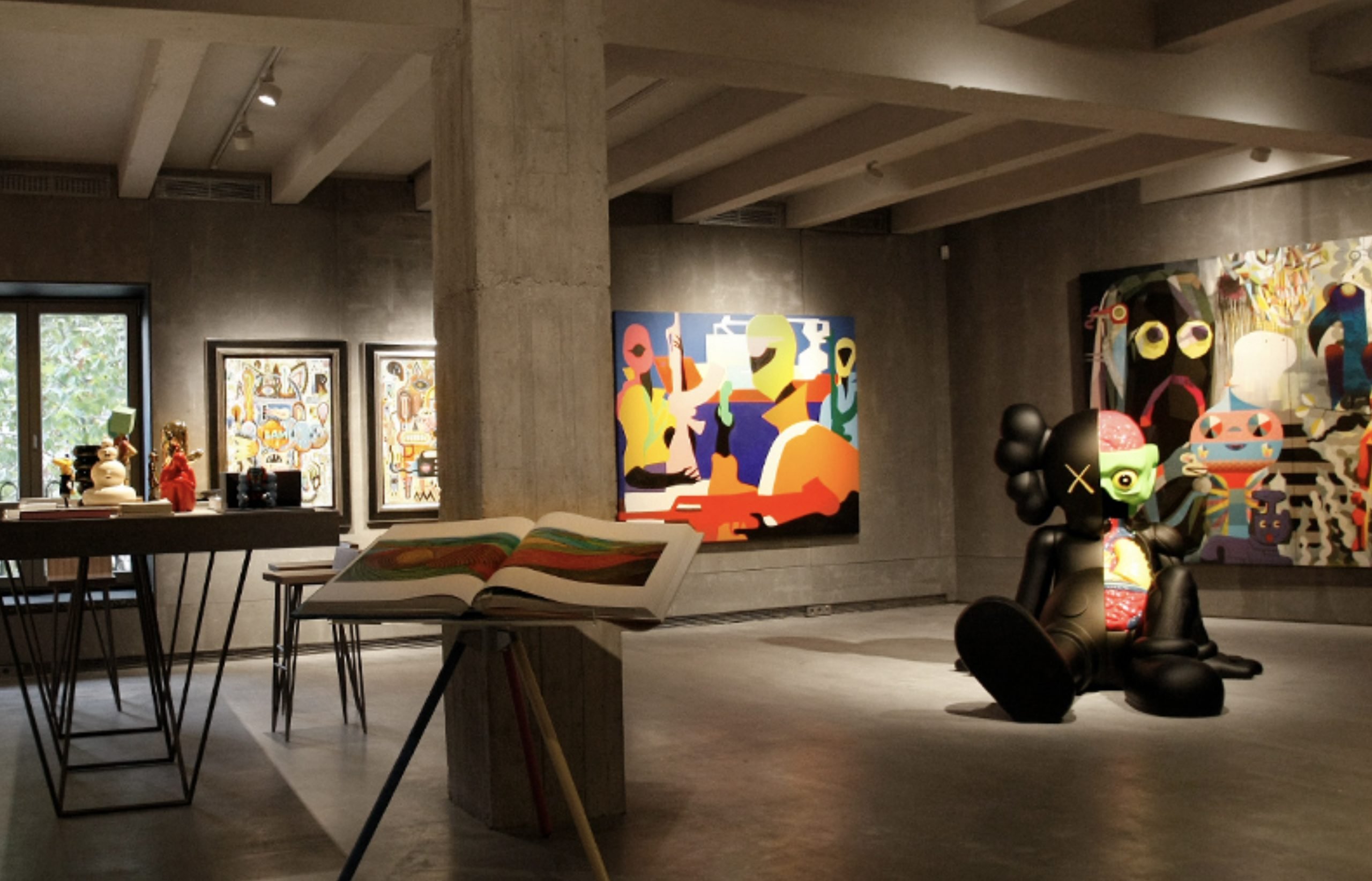Juan Herreros, the architect who designed SOLO’s home, chats to us about this extraordinary project, winner of the prestigious Madrid College of Architects Awards 2018.
From the outset, Espacio SOLO was conceived as a space in permanent flux. It houses an art collection but is not a gallery or museum; it provides a meeting point for a host of different projects and initiatives yet feels more like a home than an office.
How would you define this unique space?
Espacio SOLO is a typological invention that mixes ingredients of contemporary art venues, domestic domains, working places and urban spaces. This lack of specificity builds its diversity and open spirit; it can be re-configured every day from the most generic to the most sophisticated, from the collective to the intimate. The secret is the material elements that recall urban and industrial culture, the spatial layout that offers a series of experiences and unpredictable surprises, and the atmosphere that manipulates visitors’ perception of time.
While you were working on this project, Colección SOLO continued to grow. Did that present any specific difficulties or challenges?
Although this was not a tailored project, the collection’s growth in parallel with the project was the permanent topic that glued the design process and the ongoing dialogue with the collectors. Obviously, the space is informed by the kind of art that it hosts but it works as a medium to think about the need for flexibility of formats, resources and devices that contemporary life is offering us.
Espacio SOLO has a labyrinth-like feel. Wherever a visitor happens to be, they have a range of different routes available, all of which seem equally enticing. Do you like the idea of visitors exploring or even losing their way?
There are different audiences in Espacio SOLO. Visitors who come to discover the collection and space by themselves are conducted by the spatial configuration of corridors, squares and rooms; they feel like explorers of an unknown territory. For those attending a programmed event or a professional meeting, meanwhile, the space and collection build a unique environment for the main porpoise of their visit. And there are everyday users too, who work there but are not necessarily involved in the running of the space or art collection. All of them are important for us and we hope that the permanent discovering of new equations, lights, sounds and opportunities form part of the character and happiness of inhabiting this place.
At Espacio SOLO, “white box” exhibition areas sit alongside street-inspired corridors, an auditorium and more intimate, homely environments. Was it fun to develop a project like this?
The diversity of the material and spatial conditions of the rooms and corridors is part of the urban content of the project. We love to describe it as a collection of streets, squares and buildings; some of these buildings are “public” while others are “domestic.” Contemporary culture’s blurred limits between work and home, between the public and the private, are expressed in the richness of situations that can be experienced here.
Art is intrinsic to Espacio SOLO. There are even artworks in the kitchen and toilets! How does this approach reflect your own views on our relationship with the visual arts?
I understand that the message of Espacio SOLO is about the demystification of art, about giving it a place in everyday life. This can be the place to let young people discover a kind of creativity close to their aesthetic codes and develop a critical position against certain established truths that don’t work anymore. Art is provocation, surprise, engagement.
Finally, Espacio SOLO is located in the heart of Madrid, very close to landmark institutions such as the Prado or Reina Sofia Museums. In your view, how do Espacio SOLO and Colección SOLO impact on the city’s architectural and cultural landscape?
Espacio SOLO is unique because of its concept and content. After visiting all the venues you mention, coming to Espacio SOLO will enable many people to understand the present and the social, political and technological transformations currently taking place in our world. Even for those who are not, a priori, particularly interested in the kind of art that Espacio SOLO shows, the collection works as data centre for the coordinates of our present-day and deserves a place in our cultural landscape.
To visit Espacio SOLO, please email us at visitas@colecciónsolo.com

